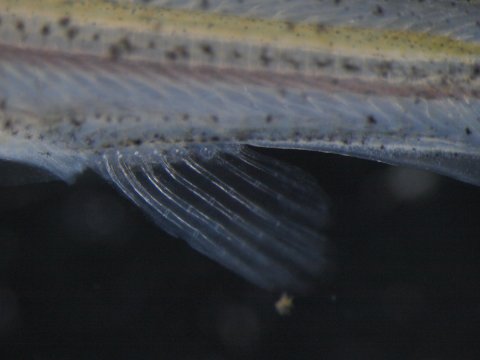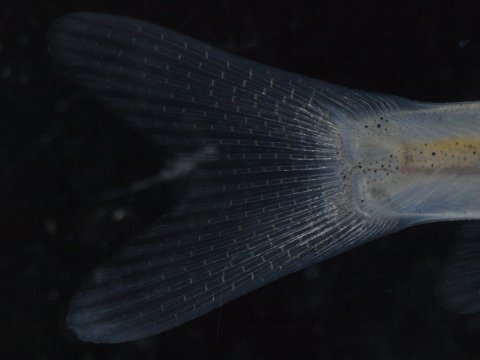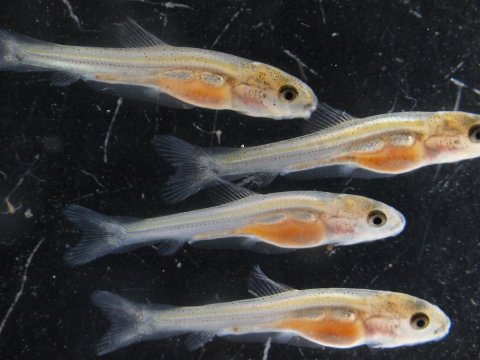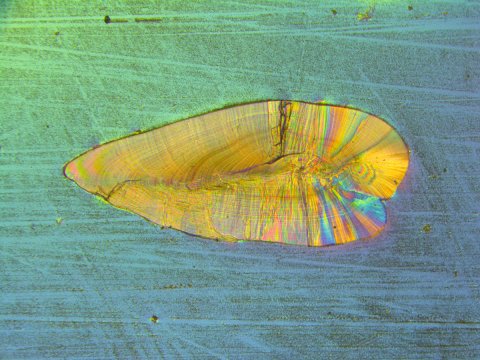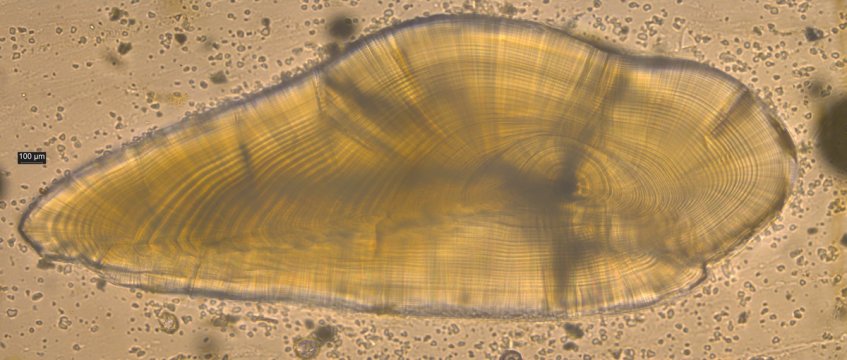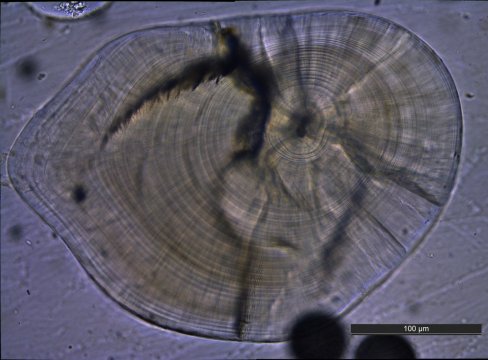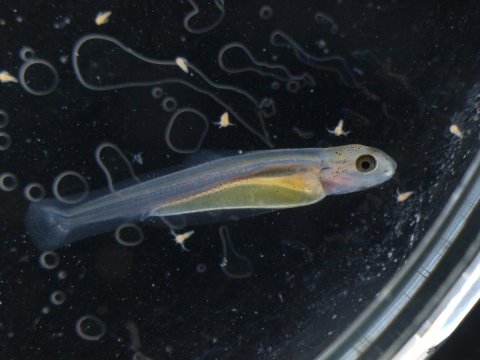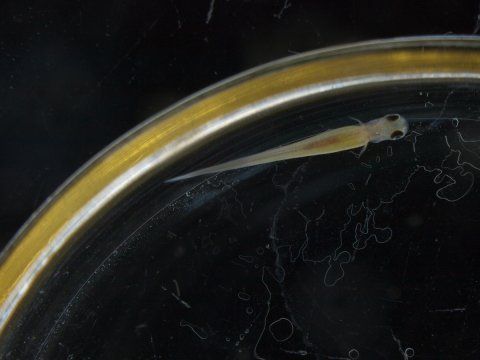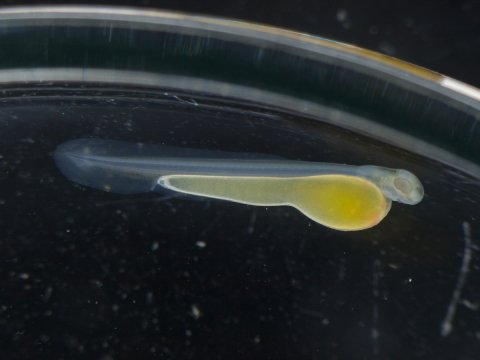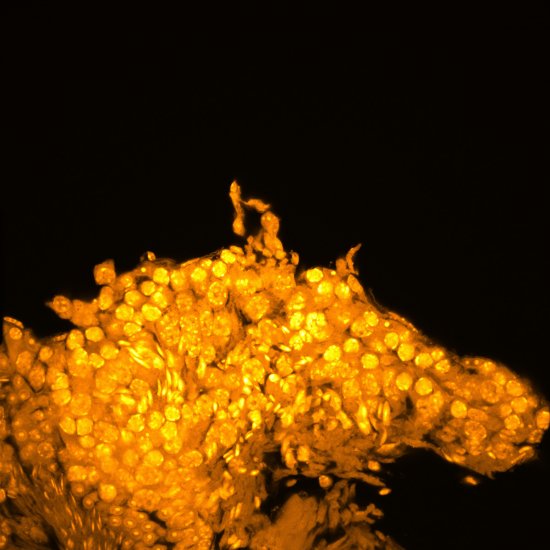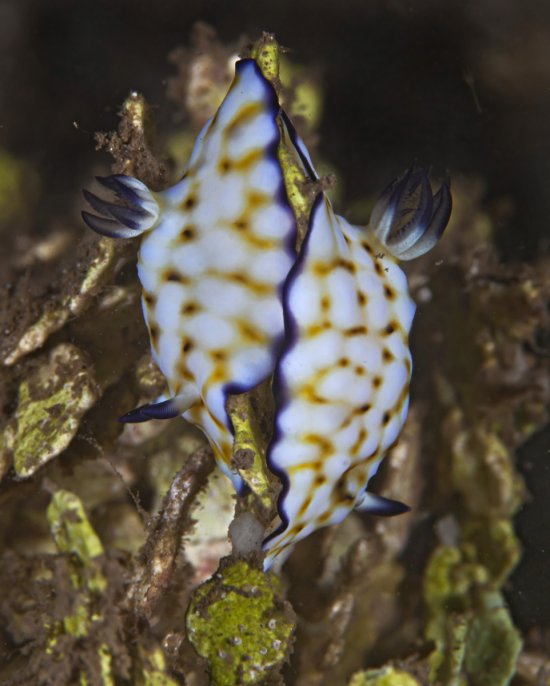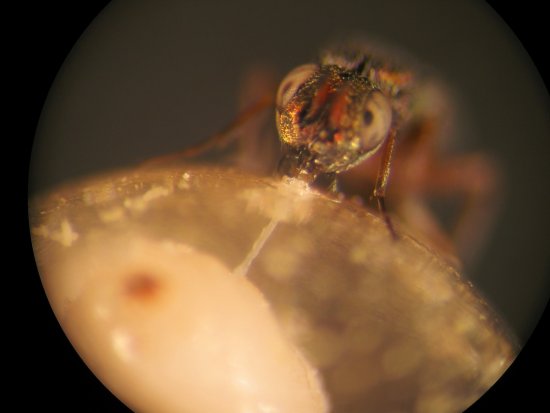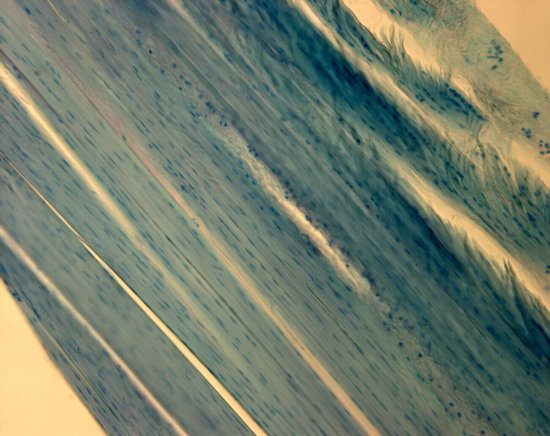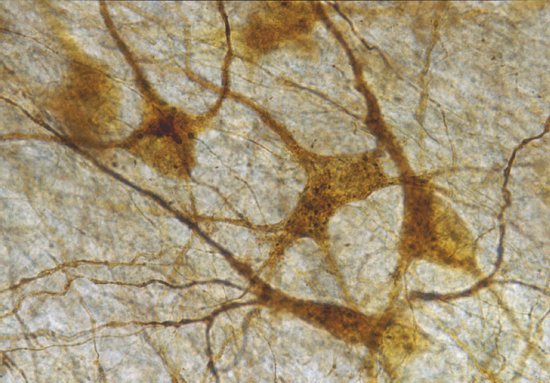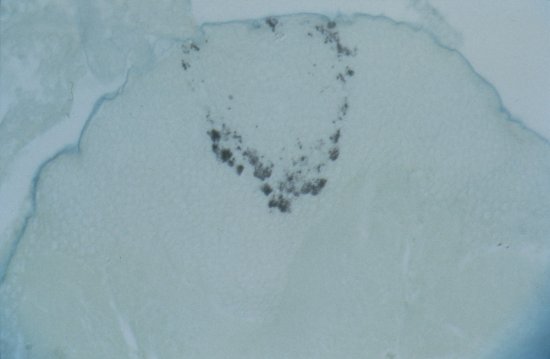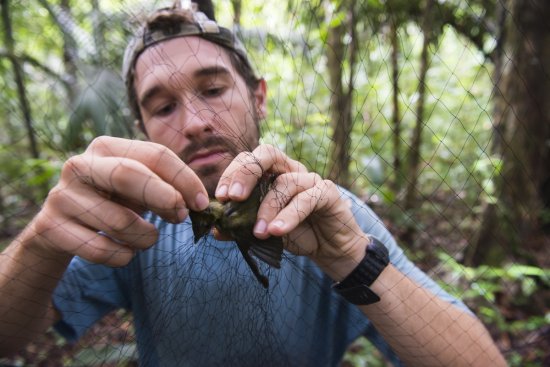
© Xavier COLOMBET/LEHNA/CNRS Images
Reference
20170047_0011
Vue au microscope UV à épi-fluorescence d'un otolithe préparé de chevesne
Prepared otolith from a chub, Squalius cephalus, viewed using a UV epifluorescence microscope and marked with alizarin complexone. The chub is a very common species of freshwater fish in Europe. Otoliths are mineral concretions found in the inner ear of vertebrates. They are different shapes depending on the species. It is possible to use them to estimate the age of a fish in days by counting the successive daily deposits of CaCO3 (calcium carbonate). In this image, we can clearly distinguish the orange marking. There are thirty days between where the marking finishes and the edge of the otolith. Greater magnification is needed for effective counting (700x with immersion).
The use of media visible on the CNRS Images Platform can be granted on request. Any reproduction or representation is forbidden without prior authorization from CNRS Images (except for resources under Creative Commons license).
No modification of an image may be made without the prior consent of CNRS Images.
No use of an image for advertising purposes or distribution to a third party may be made without the prior agreement of CNRS Images.
For more information, please consult our general conditions
